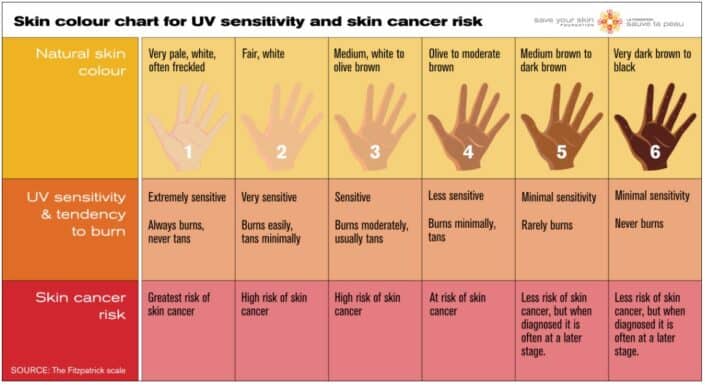Skin cancer develops when skin cells proliferate and replicate in an unregulated, disorderly manner. When skin cells age and die or get injured, new skin cells develop. When this mechanism fails, a fast proliferation of cells (which may well be aberrant cells) occurs.
There are numerous skin cancer facts, but one that’ll get you thinking is that in the USA, skin cancer affects more individuals than any other kind of cancer.
But why is it so? What are the risk factors relating to it? Here are some of the most astonishing skin cancer statistics that affect all people worldwide.
Skin Cancer Facts: At a Glance
- Approximately 20% of Americans will get skin cancer.
- Almost 9,500 Americans are diagnosed with skin cancer daily.
- If you’ve had 5 or more moles, you’re more than twice as likely to get melanoma.
- If treated early, the 5-year survival rate is 99%.
Types Of Skin Cancer
Basal Cell Carcinoma
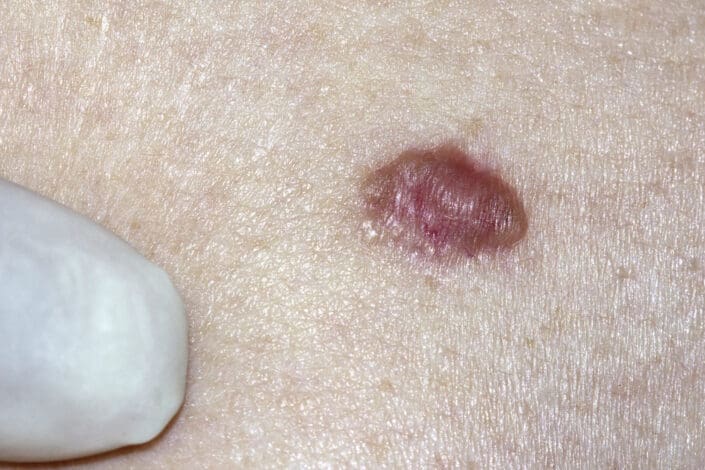
Each year, around 5.4 million basal and squamous cell skin malignancies are detected in the United States, according to one estimate.
Basal cell tumors account for around 8 out of 10 of these malignancies. Squamous cell carcinomas are less common.
For many years, the number of people diagnosed with these tumors has risen. This is most likely due to a confluence of improved skin cancer diagnosis, more sun contact, and individuals living longer.
Basal cell skin tumors seldom result in death. Around 2,000 persons die in the United States each year due to these cancers. In recent times, the fatality rate from basal cancer has decreased.
Most patients who die from these diseases are older and may not have sought medical help until the cancer has progressed significantly.
Those with compromised immunity, such as those who have received organ transplants, are also more prone to succumb to these tumors.
Squamous Cell Carcinoma
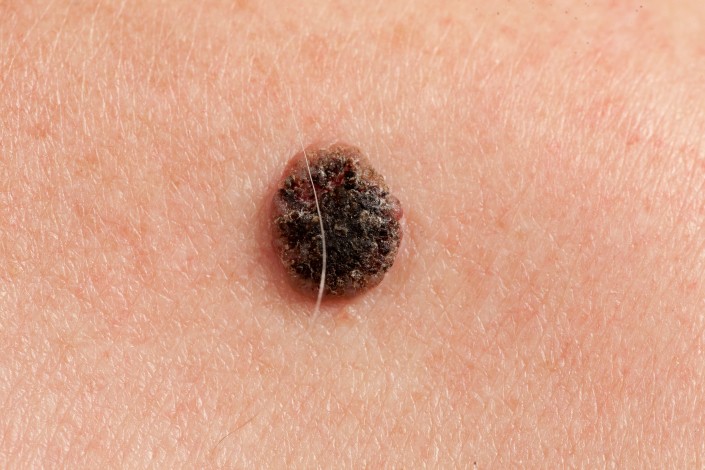
The second most occurring kind of skin cancer is squamous cell carcinoma (SCC). In the United States, a reported 1.8 million instances of SCC are detected each year.
It’s surprising how many people die from skin cancer each year. According to the most recent statistics, squamous cell carcinoma of the epidermis kills more than 15,000 individuals in the USA each year, more than twice as many as melanoma.
Every month, more than 5,400 individuals die from nonmelanoma skin cancer throughout the globe. SCC is 100 times more common among organ transplant recipients than in general.
The application of an SPF 15 or greater sunscreen regularly decreases SCC incidence by roughly 40%.
Merkel cell carcinoma, a unique and dangerous type of skin cancer, had a 95% rise in incidence from 2000 to 2013.
Melanoma
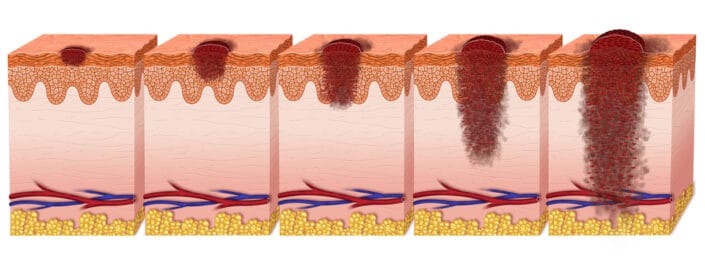
Researchers predict the number of people dying from melanoma to rise by 6.5% in 2024.
In the United States alone, a total of 207,390 instances of melanoma were detected in 2021. There were 106,110 in situ (noninvasive) instances restricted to the epidermis (top layer of skin), plus 101,280 invasive cases entering the epidermis into the second layer of skin (the dermis).
Men accounted for 62,260 of the invasive cases, while women accounted for 43,850.
The number of new aggressive melanoma cases detected each year grew by 44% during the last decade (2011-2021).
Melanoma killed 7,180 individuals in 2021, according to estimates. There were 4,600 males and 2,580 women among them.
The sun is responsible for the great majority of melanomas. One research indicated that ultraviolet (UV) light from the sun is responsible for roughly 86% of melanomas.
How Skin Cancer is Spread Across Various States
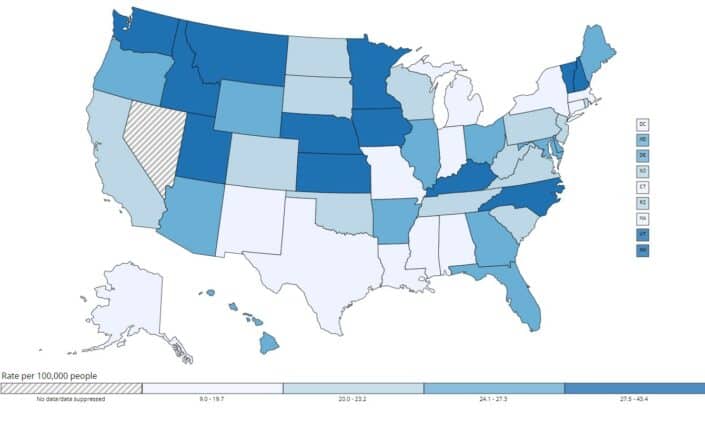
A survey done in 2018 showed that Utah is most prone to skin cancer. 44 out of 100,000 people have skin cancer.
New York is among the least affected in terms of skin cancer, with an average of 19 people suffering out of 100,000.
Do Age & Gender Have an Impact?
Melanoma is responsible for 6% of all novel cancer cases in males and 5% of new cancer occurrences in females.
Melanoma has a greater risk of developing in men under 49 than every other cancer.
Men are 55 % more likely than females in the same age bracket to suffer from melanoma between 15 and 39.
Melanoma is more common in women under 49 than every cancer besides breast and thyroid tumors.
Males are more likely than women to get melanoma after 50. Melanoma is most often seen in Caucasian males over the age of 55. However, until the age of 49, non-Hispanic white women are substantially more likely than white males to get melanoma.
Melanoma affects one in every 27 white males and 40 white women throughout their lifetime.
Does Ethnicity Affect the Chances of Skin Cancer?
Do black people get sunburn? Yes, they can; but, the chances are less. The anticipated five-year survival rate for Black persons with melanoma from sunburn is just 67%, compared to 92% for white folks.
In Asians, skin cancer accounts for between 2% to 4% of all cancers.
In Hispanics, skin cancer accounts for 4 to 5% of all cancers.
In Black individuals, skin cancer accounts for 1 to 2% of all cancers.
Melanomas most often develop on non-exposed skin with much less pigment in Black people, Asiatic, and native Pacific islanders, with up to 60 to 75% of cancers developing on the palms, feet, nasal mucosa, and nail areas.
The plantar region of the heel is the most prevalent location of skin cancer among nonwhites, accounting for 30 to 40% of cases.
In Black people, SCC is the most frequent kind of skin cancer.
Hispanic and Black people are more likely than non-Hispanic white Americans to get late-stage melanoma.
52% of non-Hispanic black patients and 26% of Hispanic patients get an early assessment of advanced-stage melanoma, compared to 16% of non-Hispanic white counterparts.
Acral lentiginous melanoma (ALM, melanoma of the palms, feet, and nailbeds) is more common in people of color than in Caucasians. Still, superficial spreading melanoma is the most common subtype among Caucasians and Hispanics.
What are the Prominent Risk Factors For Skin Cancer?
Complexion
Anyone, independent of skin color, may get skin cancer.
Skin cancer is over 30 times more common in non-Hispanic white people than in non-Hispanic black people or Asian/Pacific Islander people.
Individuals with darker skin tone are more likely to develop skin cancer that is more resistant to treatment.
According to research, melanoma patients with colored skin are less likely to recover than white people.
In African American individuals, 25% of melanoma cases are discovered after cancer has progressed to surrounding lymph nodes. Besides that, 16% find out after the disease has migrated to distant lymph glands and other regions.
Sunburn
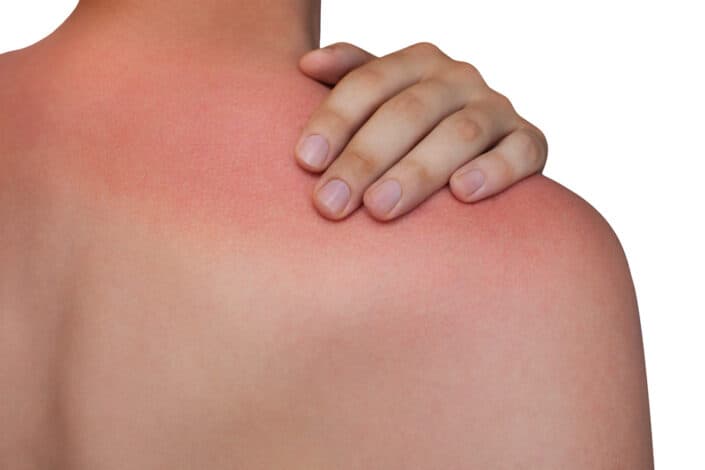
Some people, owing to their skin type, are more susceptible to sunburn than others. Your skin type determines your vulnerability; persons with fair complexion are at the most risk. However, anybody can get burnt.
Sun exposure can tremendously increase the risk of skin cancer even if you don’t get a burn. The sun may trigger cellular deterioration that can contribute to cancer, especially if you have a tan or a dark skin type that does not redden.
The sun’s strength varies depending on the season, hour of the day, and geographical region. Exposed skin will burn sooner and more severely if the UV index is high.
Sunburns that occur often increase your risk. Sunbathing can lead to skin cancer and has a significant role in developing melanoma in fair-skinned persons, particularly those with a hereditary susceptibility.
According to recent statistics on sun damage, UV rays that cause skin damage may also modify a tumor-suppressing gene, reducing the ability of harmed cells to repair themselves before cancer develops.
People who work or play sports outside are more likely to get frequent sunburns, leading to skin cancer.
Family History
Melanoma is a type of cancer that may run in families. One out of every ten people identified with melanoma has a close relative who has had cancer before.
You are at higher risk if one or more close genetic relations – parents, siblings, or children – have had melanoma.
Each individual with a first-degree relation confirmed with melanoma has a higher risk of contracting cancer than those who have no close history of the disease.
Health History
Certain occurrences might raise your chances of getting skin cancer. Exposure to chemicals, such as arsenic, particulate emissions, or coal is among them.
Having an autoimmune condition like lupus raises your chances. Similarly, having had an organ surgery increases your risk of SCC by a factor of 100.
Tobacco Use
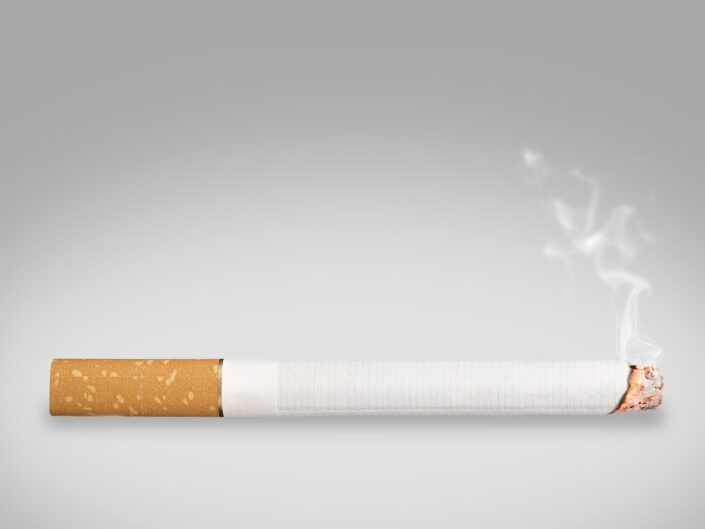
Melanoma individuals who have smoked cigarettes in the past have a 40% lower chance of surviving the illness than those who have never begun smoking.
Aside from its potential impact on the immunological response, smoking may also impede skin cancer surgical recovery.
Smoking cigarettes, proven in several scientific studies, impairs the blood flow required for wound healing dramatically.
Individuals who smoke regularly have an increased risk of healing issues, such as wound disintegration, localized tissue mortality, and infection.
Indoor Tanning
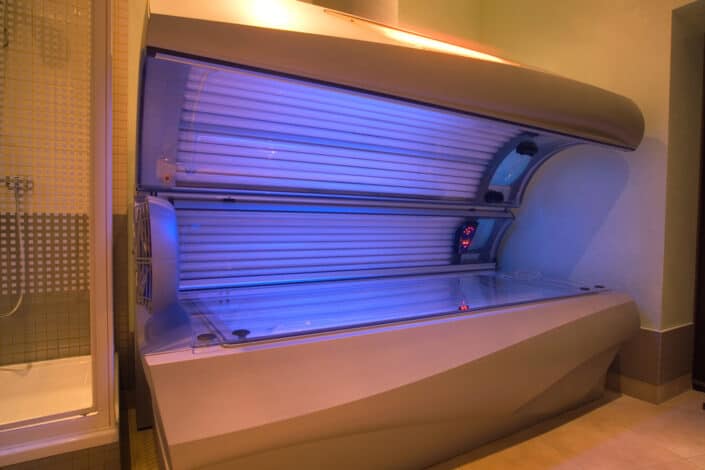
In the United States, the cost of immediate medical treatment for skin cancer instances linked to indoor tanning is $343.1 million per year.
Indoor tanning is linked to more than 419,000 occurrences of skin cancer in the United States each year. It includes around 245,000 BCC, 168,000 SCC, and 6,200 melanomas.
Skin cancer is more common due to tanning beds than lung cancer as a result of smoking.
Those who have ever tanned inside have an 83% higher chance of squamous cell carcinoma and a 29% more risk of basal cell carcinoma.
One study of 63 women affected with melanoma before the age of thirty discovered that 61 (97%) of them had used tanning booths.
People who use a tanning booth for the first time before the age of 35 have a 75% increased risk of melanoma.
Between 2009 and 2015, indoor tanning among high school teenagers in the United States fell by 53%.
Indoor tanning equipment may produce UV rays 10 to 15 times stronger than the sunlight at its strongest.
Altitude

Elevation does impact the danger of skin cancer because the more significant the altitude, the more sunshine reaches the earth, including UV radiation that may cause skin cancer.
Because of its elevation, Colorado, for example, has one of the most significant melanoma frequencies in the nation.
Long-term Medication
Long-term use of some drugs, such as immunosuppressants, might raise your risk of skin cancer.
Melanoma risk increases in those who use particular blood pressure medicines because such prescriptions might make them more sensitive to the sun’s damaging ultraviolet (UV) radiation.
Skin Aging
The sun is responsible for 90% of skin aging.
Daily usage of sunblock lotion with an SPF of 15 or above reduces skin aging by 24% compared to individuals who do not use it.
The effects of the sun build up over time. Only roughly 23% of long-term exposure occurs before the age of 18.
Children & Teenagers
Melanoma in children and teens represents 1.3% of all melanomas and 7% of all malignancies in youths.
Melanoma frequency in 10 to 29-year-olds fell by 4% per year in men and 4.5 % in women between 2005 and 2015.
Medication error of pigmented lesions, which happens up to 40% of the time, causes treatment of adolescent melanoma to be delayed.
Conclusion
So, what do you think of these astonishing skin cancer facts? It might seem like any other illness with strange outcomes from a distance. However, you realize how vast it is when you learn about its risk factors and skin cancer statistics.
The information given above is accurate in its entirety and will give you a brief outlook on the modern problem of skin cancer.

